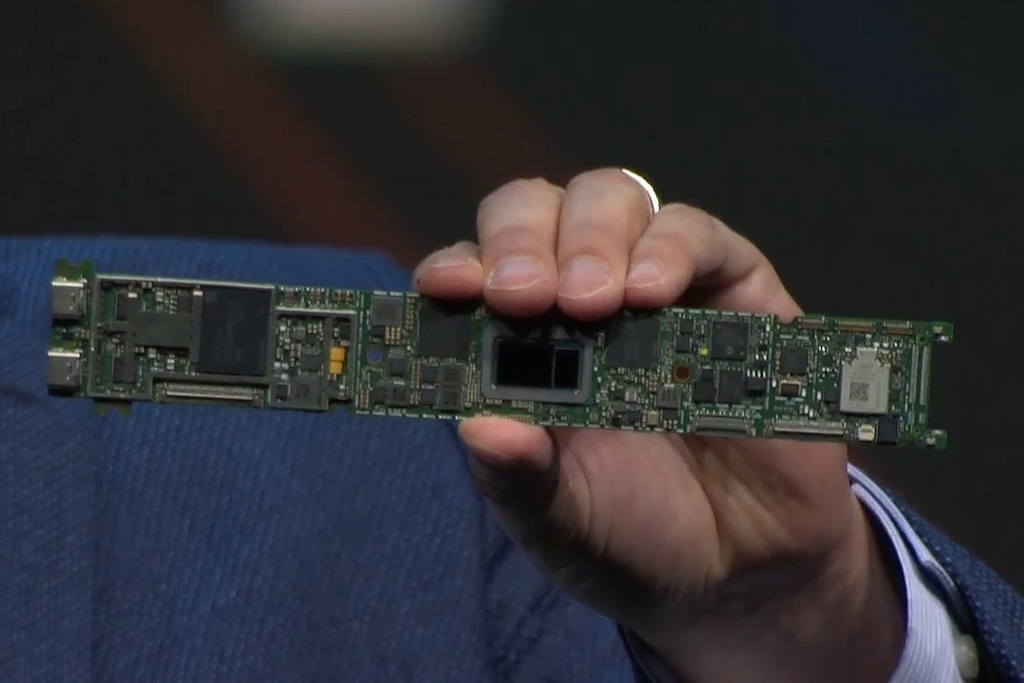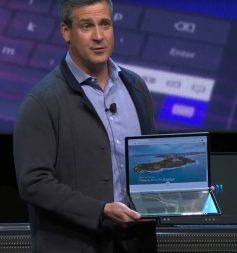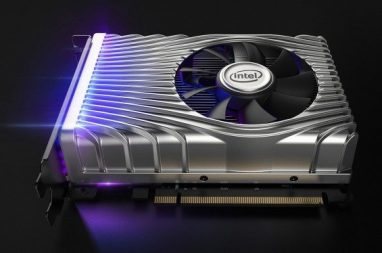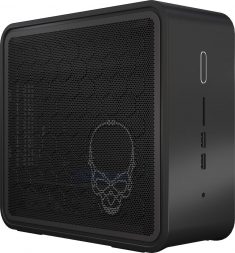
Intel’s CES 2020 presence was focused on its latest generation of mobile processors: Tiger Lake. The company also had some new creations and prototypes on display including a 17-inch folding laptop, its first discrete video card in two decades and a mini computer with big time muscle.
 Intel’s new Tiger Lake mobile processors
Intel’s new Tiger Lake mobile processors
At CES, Intel took the wraps off the follow-up to Ice Lake mobile processors. The new series is code-named Tiger Lake. It’s built on Intel’s new enhanced 10nm++ process and features the company’s new Xe graphics architecture. We know Intel needs Tiger Lake, with new AMD mobile processors also being announced at CES. But what do the new chips mean for consumers?
Intel says you’ll see “double digit” performance gains from Tiger Lake compared to the previous generation of mobile CPUs. The chips also have integrated support for Wi-Fi 6 and Thunderbolt 4. So wired, or wireless, connectivity is going to be blazing fast.
 However the focus of the Tiger Lake series is on graphics performance. The onboard graphics capabilities include AI to enhance blurred or low resolution images. The boost in graphics processing is expected to pay off in a big way for those who use a laptop for image processing applications or casual gaming. Intel says that instead of requiring a gaming laptop with a discrete graphics card, many games will be able to run at playable resolution and frame rates on a thin, light, ultraportable equipped with a Tiger Lake processor.
However the focus of the Tiger Lake series is on graphics performance. The onboard graphics capabilities include AI to enhance blurred or low resolution images. The boost in graphics processing is expected to pay off in a big way for those who use a laptop for image processing applications or casual gaming. Intel says that instead of requiring a gaming laptop with a discrete graphics card, many games will be able to run at playable resolution and frame rates on a thin, light, ultraportable equipped with a Tiger Lake processor.
The company also showed off Tiger Lake powering a prototype, folding 17-inch laptop code-named “Horseshoe Bend.”
 DG1 graphics card
DG1 graphics card
Speaking of discrete graphics cards, Intel now has one if its own: the DG1. For the first time in two decades, Intel has its logo on a graphics card, which in theory would put in in competition with Nvidia and AMD. Except you won’t be able to buy the DG1. Intel says it’s shipping these video cards exclusively to software developers to ensure their apps are optimized for the company’s new Xe graphics architecture. Stay tuned on this one, though, because there are already rumors of a DG2 card in the wings, and it would only make sense that eventually Intel would commercialize them.
 NUC 9 Extreme
NUC 9 Extreme
Also worth mentioning was the appearance—or re-appearance—of Intel’s NUC. The mini computer has been around for a while (I reviewed one back in 2014), but this latest generation promises to deliver gaming PC-level performance. The “extreme” label is well deserved. This little box comes with an Intel Core i9 CPU and a PCIe x16 slot that can accommodate a desktop graphics card. Naturally that means it’s not quite so “mini” as before, but the NUC is still a fraction of the size of a traditional desktop PC.
The DG1 graphics card doesn’t look to be an option any time soon, and Intel isn’t talking availability for the NUC 9 Extreme at this point, but expect to see laptops packing those new Tiger Lake processors later this year. Looking for more cool tech? A team of Best Buy Canada blog contributors has been at CES 2020 in Las Vegas all week, so make sure to catch up here on all the news that came out of CES.



